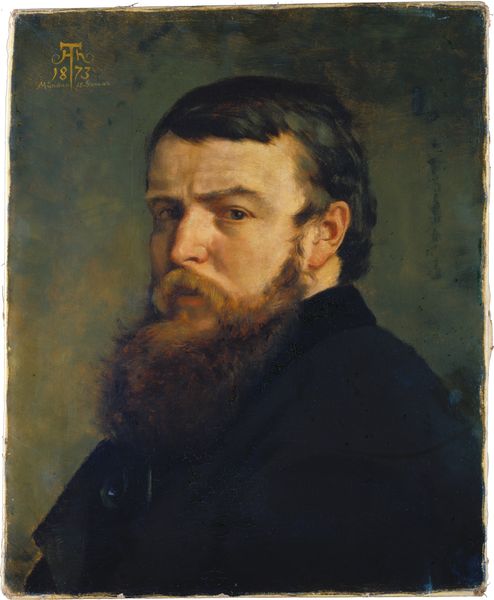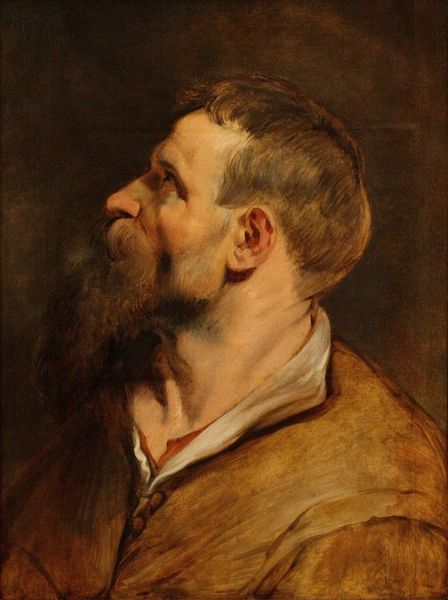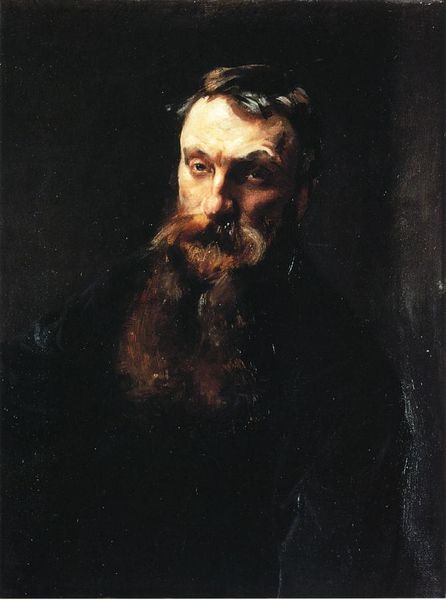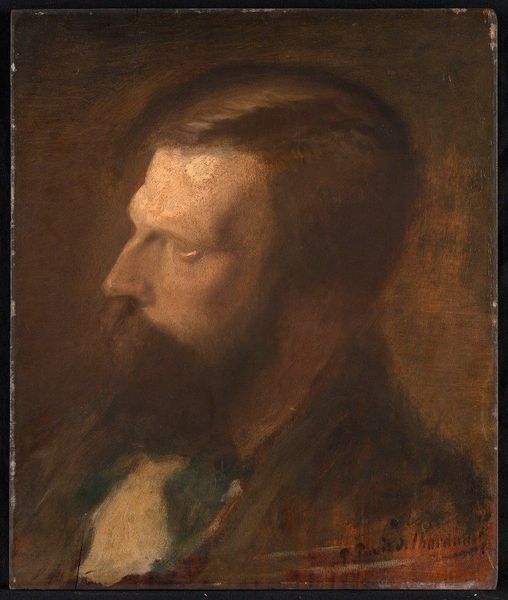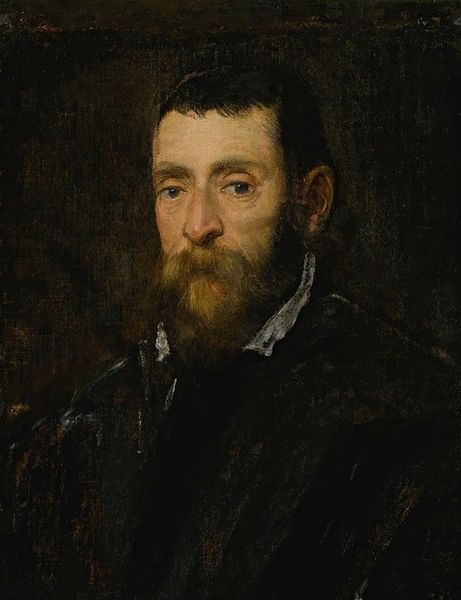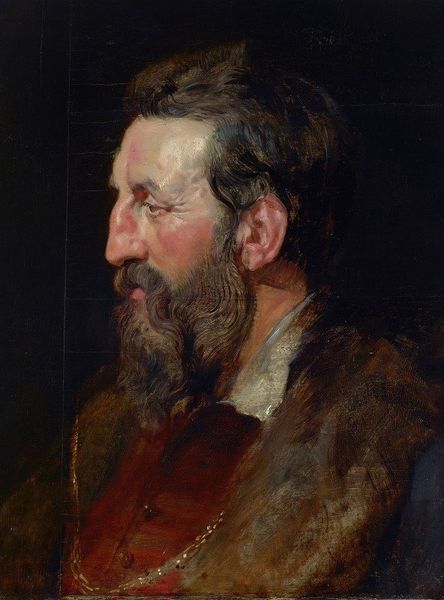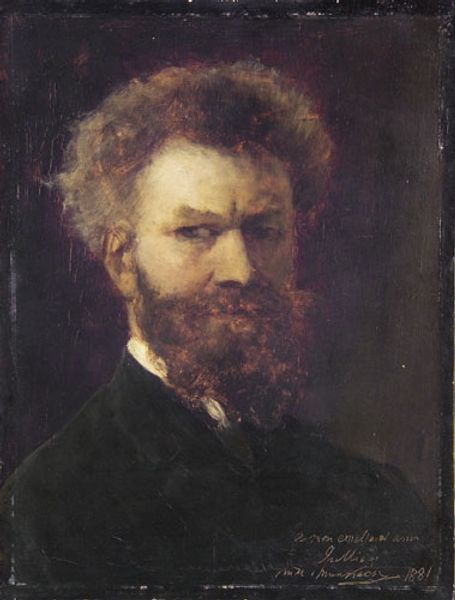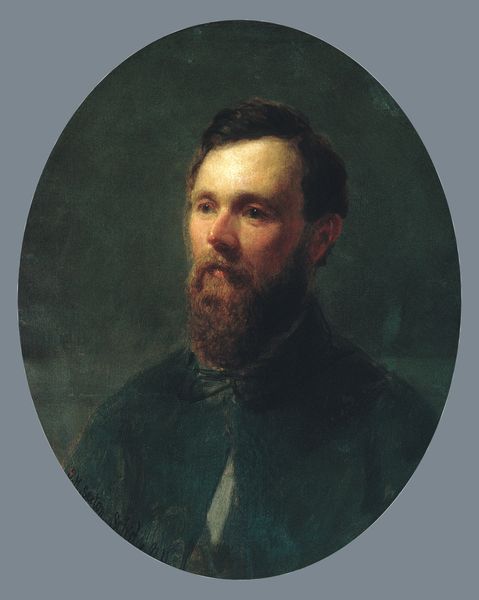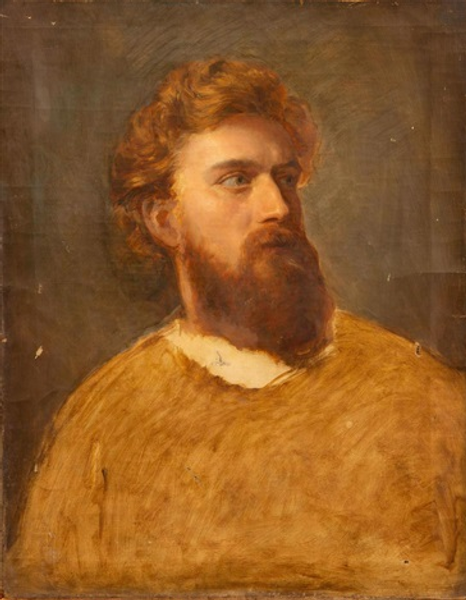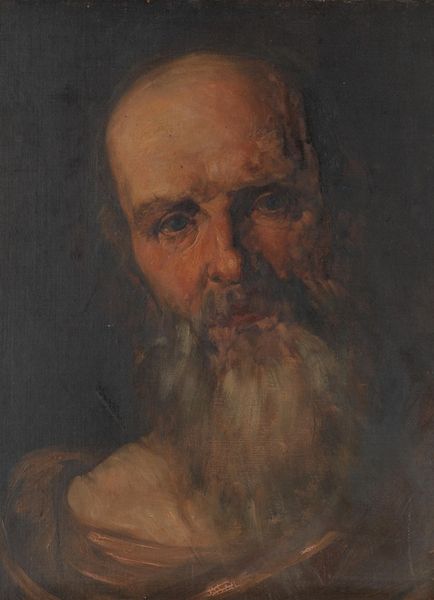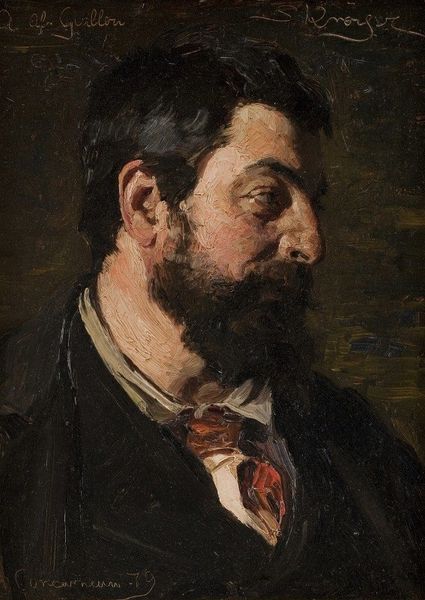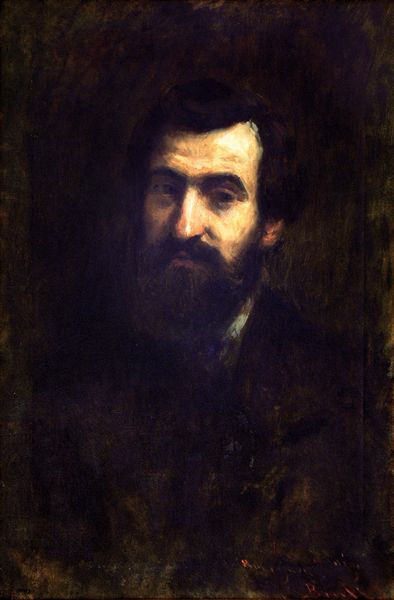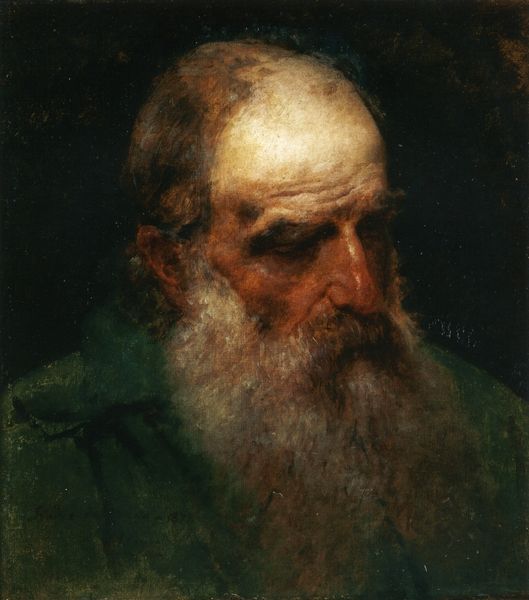
Copyright: Public Domain: Artvee
Editor: Here we have Franz von Lenbach's "Self Portrait" from 1874, rendered in oil paint. There's an immediacy to it, almost like a sketch, with visible brushstrokes that capture a sense of raw, unfiltered observation. What strikes you when you look at this piece? Curator: The interesting part about the "sketchiness" of the artwork lies in Lenbach's specific manipulations of the materials. It prompts us to ask why an artist, during the rise of industrial production and photography, chooses to represent himself with a technique that feels deliberately "unrefined." Perhaps he wanted to differentiate artistic labour, a hand-made representation, from other types of productions. Editor: So you’re saying his style is a commentary in and of itself? That by showing us the marks of his labor, he’s making a statement about the value of art in an increasingly industrial world? Curator: Precisely. Think about the rise of photography at this time. Artists were grappling with what painting *could* offer that a photograph could not. The visible brushstrokes, the textures – these become critical, underscoring the human element. The oil paint becomes an explicit material, its application a conscious act against mechanical reproduction. He calls our attention to the method, not the polished product. Do you see any social class implications here? Editor: I think so! There's something quite defiant in his appearance—the unkempt beard, the slightly disheveled look. He almost rejects the expectations of bourgeois formality, and this is expressed through material means. I'd not considered his beard that way, that even it represents artistic labor. Curator: It suggests a different kind of work, one divorced from the clean lines of the factory or office. The materiality of the image underscores a celebration of individuality through craftsmanship. He invites us to consider how his mode of production positions him within, or perhaps against, the broader social and economic landscape of the time. Editor: I hadn’t thought about this artwork in terms of production. Now it brings out so many different ideas. Thanks! Curator: My pleasure. Seeing art through the lens of its materiality often opens unexpected pathways to understanding its broader significance.
Comments
No comments
Be the first to comment and join the conversation on the ultimate creative platform.
